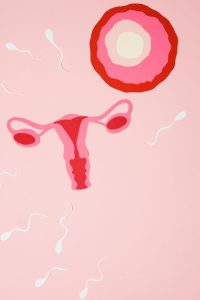ヒトが「小顔」に進化し続ける理由とは
小顔はもてはやされがちだが、そのため小顔マッサージや小顔メイク、小顔美容整形など、小顔になるための話題をあげれば枚挙にいとまがない。総じて好まれる小顔だが、ヒトはここ1万年の間、小顔に進化しているのだという。
出産のジレンマとは
ヒトの進化は、脳の容量が大きくなる歴史でもあった。脳と体重の比率でもヒトは他の霊長類と比べて脳の割合が大きい(※1)。また、ヒトの脳はどんどん巨大化するのではなく、ネットワークを駆使して効率的に大きくなったと考えられている(※2)。
ヒトが直立二足歩行をするようになると体型も劇的に変化したが、骨盤も大きく変形し、これは出産に大きな影響を与えたであろう。ヒトの祖先の女性の骨盤は、出産するために下部がぽっかり空き始めた。その理由は、新生児の頭は脳が大きくなったからと考えられている(※3)。
頭の大きな赤ちゃんを外へ産み出すため、ヒトの産道は途中で角度がついてねじれており、赤ちゃんが外へ出てくる途中、頭を回転させるなどの複雑な過程を経るため、赤ちゃんの首にヘソの緒が巻き付いたりといった事故が起きることもあった(※4)。そして、ヒトの祖先の出産には、早い時期から助産師のような存在が必要になったと考えられている(※5)。
このように脳が大きくなり直立二足歩行を始めたためにヒトの女性の骨盤が変化し、難産になったことを出産のジレンマ(Obstetrical Dilemma)というが、ただこの考え方には議論が起きている(※6)。直立二足歩行は、難産の原因となる骨盤の構造にあまり影響を与えていないと考えられるようになったからだ。ただ、人類進化と難産、助産師の関係は否定されていない。
前述したように、ヒトの脳の容量はどんどん大きくなったわけではない。ホモ・サピエンスの平均の脳の容量で最も大きかったのは約1万年前の最終氷期が終わる頃の1593cc(立方センチメートル)で、最も小さいのは現代人の1436ccだったという調査論文がある(※7)。この論文によれば1万年の間に男性で157cc(約10%)、女性で261cc(約17%)減少したという。ちなみに、ホモ・サピエンスよりネアンデルタール人のほうが脳が大きかったという考え方は否定されつつある(※8)。
自己家畜化が原因か
では、氷河期が終わってから、なぜヒトの脳は小さくなったのだろうか。
気温が上昇したことで小さな身体のほうが有利になり、身体が小さくなるにつれて脳も小さくなったのかもしれないが(※9)、この変化はヨーロッパ、アフリカ南部、中国、オーストラリアで同時に起きているので説明できないという説もある(※10)。また、脳が小さくなったことと現代人の認知機能の低下の間に、何か関連があるのかもしれない(※11)。
1万年前頃から世界各地で起きた「農業革命」が、ヒトの身体を小さくしたという説もある(※12)。この説によれば、ヒトは農耕による人口集中によって、感染症にかかりやすくなり、農作物へ依存することで周期的な飢餓と社会的な不平等が起き、栄養や身体的なバランスが崩れ、身体も脳も小さくなったのだという(※13)。
また、なぜヒトの脳が小さくなったのかという問いに「自己家畜化(Self-Domestication)」が進んだから、という説もある。
ウシやブタなどの哺乳類が家畜化されると形態から性質、遺伝子までも改変される。全体に丸みを帯びた体型になって凹凸や頭部と脳の容量が減り、歯も小さくなって闘争本能は抑えられる。オスメスの性的二型は小さくなって幼形成熟(ネオテニー)が起き、発情期が頻繁になるなどといった変化が起きる(※14)。
ヒトの自己家畜化の起源は、チンパンジーの仲間で遺伝子がよりヒトに近いボノボにみられるというが(※15)、ヒトはむしろ自らを家畜化してきたというわけだ。
氷河期が終わって気温が上昇し、狩猟採集から農業革命が起きて集団化が進み、協調性を求められたヒトの自己家畜化が進む。こうしてヒトの脳、歯、顎は小さくなり、顔の凹凸も少なくなっていった。
そして、より小顔の異性が好まれるようになり、ヒトは小顔へと進化し続けているのかもしれない。
※1-1:Harry J. Jerison, “Evolution of the brain and intelligence” Current Anthropology, Vol.16, No.3, 403-426, 1975
※1-2:Jeremy M. DeSilva, Julie J. Lesnik, ”Brain size at birth throughout human evolution: A new method for estimating neonatal brain size in hominis” Journal of Human Evolution, Vol.55, Issue6, 1064-1074, 2008
※1-3:Zachary Cofran, “Brain size growth in Australopithecus” Journal of Human Evolution, Vol.130, 72-82, 2019
※2-1:Randy L. Buckner, Fenna M. Krienen, “The evolution of distributed association networks in the human brain” Trends in Cognitive Sciences, Vol.17, No.12, 648-665, 2013
※2-2:Michael A. Hofman, “Evolution of the human brain: when bigger is better” frontiers in Neuroanatomy, doi.org/10.3389/fnana.2014.00015, 27, March, 2014
※3-1:Wenda Trevathan, Karen Rosenberg, “The shoulders follow the head: postcranial constraints on human childbirth”, Journal of Human Evolution, Vol.39, 583-586, 2000
※3-2:Scott W. Simpson, “A Female Homo erectus Pelvis from Gona, Ethiopia”, Science, Vol.322, No.5904, 1089-1092, 14, November, 2008
※3-3:Steven Emilio Churchill, Caroline Vansickle, “Pelvic Morphology in Homo erectus and Early Homo” The Anatomical Record, Vol.300, Issue3, 964-977, 2017
※4-1:Jeremy M. DeSilva, et al., “Neonatal Shoulder Width Suggests a Semirotational, Oblique Birth Mechanism in Australopithecus afarensis” The Anatomical Record, Vol.300, Issue5, 890-899, 2017
※4-2:Lia Betti, Andrea Manica, “Human variation in the shape of the birth canal is significant and geographically structued” PROCEEDINGS O F THE ROYAL SCIETY B, Vol.285, Issue1889, 24, October, 2018
※5:Jeremy M. DeSilva, “Childbirth and Infant Care in Early Human Ancestors: What the Bones Tell Us” Evolutionary Perspectives on Infancy, DOI: 10.1007/978-3-030-76000-7_4, 59-81, 1, January, 2022
※6-1:Anna Blackburn Wittman, et al., “The Evolutionary Origins of Obstructed Labor: Bipedalism, Encephalization, and the Human Obstetric Dilemma” Obstetrical & Gynecological Survey, Vol.62, Issue11, 739-748, 2007
※6-2:Mihaela Pavlicev, et al., “Evolution of the human pelvis and obstructed labor: new explanations of an old obstetrical dilemma” American Journal of Obstetrics and Gynecology, Vol.222, Issue1, 3-16, 2020
※6-3:Martin Haeusler, et al., “The obstetrical dilemma hypothesis: there’s life in the old fog yet” BIOLOGICAL REVIEWS, Vol.96, Issue5, 2031-2057, 2021
※7:Maciej Henneberg, “Decrease of Human Skull Size in the Holocene” Human Biology, Vol.60, No.3, 395-405, 1988
※8:Caroline VanSickle, et al., “Did Neandertals have large brains? Factors affecting endocranial volume comparisons” AMERICAN JOURNAL OF BIOLOGICAL ANTHROPOLOGY, Vol.173, Issue4, 768-775, 2020
※9:Kenneth L. Beals, et al., “Brain Size, Cranial Morphology, Climate, and Time Machines” CURRENT ANTHROPOLOGY, Vol.25, No.3, 301-330, 1984
※10:John Hawks, “Selection for smaller brains in Holocene human evolution” arXiv, doi.org/10.48550/arXiv.1102.5604, 2011
※11:Stibel J. M “Decreases in Brain Size and Encephalizaiton in Anatomically Modern Humans” Brain, Behavior and Evolution, Vol.96, 64-77, 2021
※12:Amanda Mummert, et al., “Stature and robusticity during the aguricultural transition: Evidence from the bioarchaelogical record” Economics & Human Biology, Vol.9, Issue3, 284-301, 2011
※13:Maciej Henneberg, Maryna Steyn, “Diachronic variation of cranial size and shape in the Holocene: A manifestation of hormonal evolution?” Rivista di Antroplogia, Vol.73, 159-164, 1995
※14-1:Adam S. Wilkins, et al., “The “Domestication Syndrome” in Mammals: A Unified Explanation Based on Neural Crest Cell Behavior and Genetics” GENETICS, Vol.197, Issue3, 795-808, 2014
※14-2:Robert L. Cieri, et al., “Craniofacial Feminization, Social Tolerance, and the Origins of Behavioral Modernity” Current Anthropology, Vol.55, No.4, 2014
※14-3:Marcelo R. Sanchez-Villagra, et al., “The taming of the neural crest: a developmental perspective on the origins of morphological covariation in domesticated mammals” ROYAL SOCIETY OPEN SCIENCE, Vol.3, Issue6, 2016
※14-4:Constantina Theofanopoulou, et al., “Self-domestication in Homo sapiens: Insights from comparative genomics” PLOS ONE, doi.org/10.1371/journal.pone.0185306, 18, October, 2017
※15:Brian Hare, et al., “The self-domestication hypothesis: evolution of bonobo psychology is due to selection against aggression” Animal Behavior, Vol.83, Issu3, 573-585, 2012


